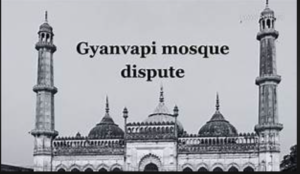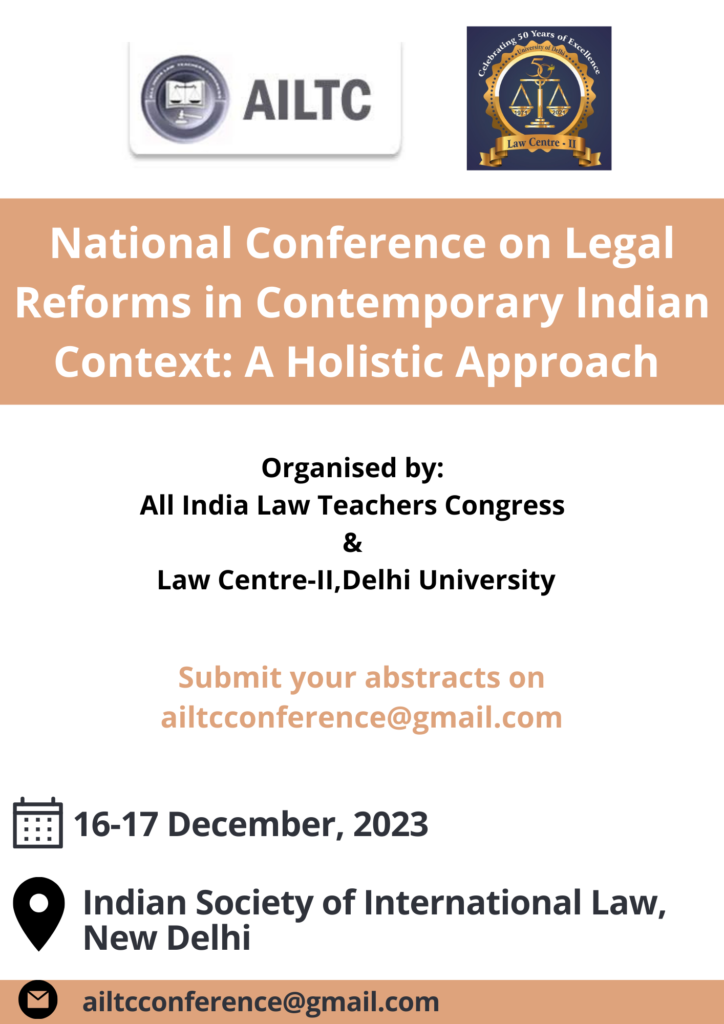The Gyanvapi Mosque Dispute: Legal, Historical, and Religious Dimensions
In the midst of the grand Pran Pratishtha ceremony at Ayodhya, where the foundation for the Ram Mandir was being laid with great fervor, another battle, quieter but equally significant, unfolded in the background. This silent clash centered around the Gyanvapi mosque in Varanasi, where historical and religious narratives intersected in a quest for identity and heritage.
The Gyanvapi Mosque Dispute – Historical and Religious Dimensions
The dispute traces back to the claim that the Gyanvapi mosque stands on the remains of the original Kashi Vishwanath temple, dedicated to Lord Shiva. The temple faced destruction numerous times throughout history, notably by Aurangzeb in 1669. In 1991, amidst the nationwide fervor around religious sites, Hindus sought access to the mosque and its premises, despite the 1991 Places of Worship Act designed to prevent such conflicts. This legal framework, however, excluded Ayodhya, paving the way for the more prominent Babri Masjid demolition in 1992. Legal battles ensued over the years, with petitions and controversies sparking communal tensions. The Supreme Court’s decision in May 2022 allowed namaz and safeguarded a shiv lingam discovered during an archaeological survey, intensifying debates around the survey’s legality and violations of the Places of Worship Act. As of September 2022, the Varanasi District Court rejected arguments against a Hindu women’s plea, sustaining the ongoing dispute.
ASI Report Unveils Historical Significance – January 31, 2024
The Gyanvapi mosque dispute has taken a significant turn with the Archaeological Survey of India (ASI) report, dated January 31, 2024, revealing that a substantial Hindu temple existed before the mosque’s construction in the 17th century. The ASI report, based on a court-approved scientific survey, states that the western wall of the mosque comprises the remaining part of an earlier Hindu temple. The Varanasi District Court recently allowed the Hindu side to offer prayers in the southern cellar of the Gyanvapi mosque, directing the district magistrate to arrange for the prayers and a priest nominated by the Shri Kashi Vishwanath Temple Trust.
Legal Ramifications and Ongoing Dispute
This decision follows a plea by four Hindu women to the Supreme Court, seeking an excavation and scientific survey of a sealed portion of the mosque in response to the ASI report’s conclusions. The ASI findings indicate that pillars and pilasters from the pre-existing temple were reused in the mosque’s construction, with inscriptions in various scripts supporting the claim. The report asserts the existence of a large Hindu temple with multiple chambers, and the ASI’s meticulous study reveals the reuse of architectural elements and sculptures in the construction. The Muslim side, represented by the Anjuman Intezamia Masajid Committee, has expressed intentions to challenge the district court’s order in a higher court.
Judicial Developments Post ASI Report – February 1, 2024
On February 1, 2024, the Varanasi district court, following the ASI’s report dated January 31, allowed Hindus to offer prayers in the southern cellar of the Gyanvapi Mosque. The ASI’s report contends that a significant Hindu temple predated the 17th-century mosque, supporting the assertions of Hindu petitioners. This development escalates an already heated legal battle, underlining the complex interplay of historical and religious narratives in Varanasi.
Legal Contest and Revision Petition in Allahabad High Court
In swift response, the Masjid Intezamia Committee filed a revision petition in the Allahabad High Court, seeking a stay on the Varanasi court’s decision. The legal contest intensifies, reflecting the deep-seated tensions surrounding heritage and religious claims. The court’s ruling comes on the heels of a plea by four Hindu women to the Supreme Court, requesting a scientific survey of a sealed mosque portion. The ASI’s findings, pointing to the incorporation of elements from an earlier Hindu temple, add layers to the ongoing dispute, probing questions about historical legacy and communal coexistence.
Legal Analysis of Varanasi District Court’s Judgment
The Varanasi district court’s recent judgment in the Gyanvapi Mosque case, allowing Hindus to offer prayers in the southern cellar of the mosque, demands a thorough legal analysis. At the heart of this analysis is the Places of Worship (Special Provisions) Act, enacted in 1991, which aims to maintain the “religious character” of places of worship as it existed on August 15, 1947. The Places of Worship Act was a legislative response to curb communal tensions arising from disputes over religious sites, such as Ayodhya. It explicitly prohibits the alteration of the status quo of religious places as of 1947, emphasizing the preservation of communal harmony. The Gyanvapi Mosque, being a 17th-century structure, falls within the ambit of this Act.
Legal Implications and Constitutional Principles
The court’s decision to allow Hindu prayers in a specific section of the mosque raises questions about its alignment with the spirit and intent of the Places of Worship Act. The Act, while freezing the status of religious places, also contemplates maintaining communal harmony, a principle that becomes particularly important in the Gyanvapi case. The interplay between religious freedom and heritage preservation is central to the legal critique of the judgment. Courts are tasked with balancing the right to worship against the imperative of preserving historical structures. The Gyanvapi case underscores the delicate legal conundrum arising from the tension between religious practices and the secular fabric of the nation.
Role of ASI’s Report in Legal Critique
The reliance on the ASI report is pivotal in the legal critique. The ASI’s conclusions, suggesting the existence of a Hindu temple prior to the mosque’s construction, have significant legal implications. Courts must analyze the methodologies employed by the ASI, ensuring transparency and objectivity in archaeological investigations. The legal implications extend to constitutional principles, particularly the separation of religion from the administration of public spaces. While the Indian Constitution guarantees the right to freedom of religion, it also places a responsibility on the state to maintain secularism and prevent religious discrimination. The court’s judgment must be analyzed in the context of these constitutional principles, ensuring that religious practices do not infringe upon the secular ethos of the nation.
Examination of Judicial Precedents and Consistency in Legal Rulings
Examining judicial precedents and their consistency with the Gyanvapi case becomes essential in a legal critique. Consistency in legal rulings is crucial for maintaining the credibility and predictability of the judicial system. Any departure from established legal principles may open avenues for further legal challenges. The court’s reliance on the ASI report as evidence of a pre-existing Hindu temple raises questions about the legal weight afforded to archaeological findings. Archaeological reports must meet legal standards of reliability and impartiality, and their use in court decisions must be carefully scrutinized.
Broader Implications on Property Rights and Religious Communities
The legal critique also delves into the broader implications of the judgment on property rights and the rights of religious communities. The court’s decision to permit prayers in a specific section of the mosque may have repercussions on the legal status of religious structures and the rights of communities to worship in those spaces. Critically, the judgment must be analyzed against the backdrop of the Places of Worship Act. The Act explicitly prohibits the alteration of the religious character of any place of worship as it existed on August 15, 1947. Permitting Hindu prayers in the Gyanvapi Mosque, a structure dating back to the 17th century, challenges the sanctity of the Places of Worship Act.
Balancing Religious Sentiments and the Rule of Law
Further complicating the legal landscape is the delicate balance between respecting religious sentiments and upholding the rule of law. The court’s decision to allow prayers in the mosque’s southern cellar reflects the judiciary’s attempt to strike a balance between religious practices and legal mandates. However, legal scholars may question whether the judgment adequately considers the constitutional mandate of secularism. The Indian Constitution not only guarantees freedom of religion but also mandates the state’s duty to maintain secularism. Permitting religious practices in a historical structure might be viewed as challenging this secular mandate
Conclusion
In conclusion, looking at the court’s decision on the Gyanvapi Mosque case, we find a lot of legal complexities to unpack. The Places of Worship Act, which aims to preserve the character of religious places as of 1947, plays a crucial role and needs careful examination in this situation. We have to consider how the court’s ruling aligns with the principles of this Act. The whole situation involves a tricky balance between the freedom to practice religion, protecting historical sites, and following constitutional rules. Experts are closely studying how this judgment could affect our constitutional values, property rights, and the harmony among different communities. The Gyanvapi case is becoming a landmark in discussions about how we legally handle our historical religious places in India. As legal minds dive into the details, they’re not just looking at this case but also thinking about how it might set a precedent for other situations. The judgment’s impact on the Places of Worship Act, our constitutional principles, and the overall relations between different communities is a big deal. It forces us to think about how our laws navigate the complex mix of history, religion, and living together peacefully in our country.
References:-
https://thewire.in/law/asis-survey-report-says-a-large-hindu-temple-existed-under-the-gyanvapi-mosque
https://www.hindustantimes.com/cities/lucknow-news/gyanvapi-court-orders-to-provide-asi-report-to-parties-in-lord-vishweshwar-suit-101706619721749.html
https://www.indiatoday.in/india/story/gyanvapi-survey-sanskrit-dravidian-inscriptions-mosque-temple-asi-report-north-south-2495162-2024-01-30
https://www.livemint.com/news/india/gyanvapi-news-masjid-committee-moves-hc-against-varanasi-courts-order-allowing-hindu-prayers-in-basement-11706790903409.html
https://www.newindianexpress.com/nation/2024/Feb/02/rs-80k-crore-earmarked-for-mnrega-govt-says-ground-situation-sets-demand
Submitted By-
Aryan Gupta
Research Intern
Rajiv Gandhi National University of Law








